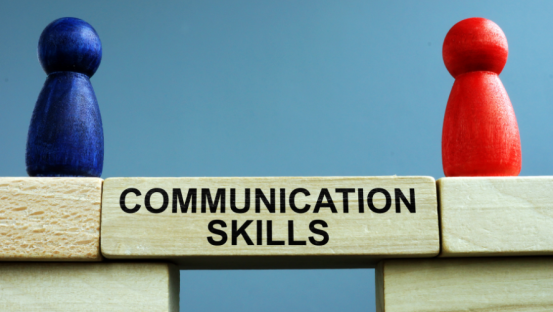5 Vital Elements Every Student Speech Should Have

So you are writing a speech for college. Knowing how much students struggle with academic writing, we bet this task feels rather daunting. But what can you do if there is no way to avoid dealing with this assignment?
An easy way is to find a reputable “write my term paper for me” service. Typically, such services offer professional assistance with all kinds of assignments, including speeches. By turning to them, you can get rid of the boring task and even ensure a higher grade.
An alternative solution is to write a presentation on your own. Doing so can be a challenge, but we prepared a list of the top five vital speech elements that should help make your presentation a blast.
A Purpose
Depending on the type of task or event for which you are preparing a speech, its purpose might be to:
-
Inform
-
Persuade
-
Inspire
-
Debate
-
Demonstrate
-
Entertain
Understanding the purpose determines the central idea of your speech and subsequently focuses the entire presentation around a clear topic, providing a logical flow.
Analyze the assignment and guidelines from cover to cover before you write your presentation. Ensure that you understand the purpose well. Then, keep it in mind while writing and presenting your speech because your purpose is the heart of it.
A Clear Structure
After a well-defined purpose, every presentation needs a structure. A honed structure makes your speech easy to follow and understand for the audience. The listeners won’t have to break their heads trying to understand where you are going with your ideas and can focus on the most important—the content.
Traditionally, all great speeches use a standard narrative structure, which comes in three parts:
-
The opener. A captivating beginning of the story gets the audience engaged and invites them on an exciting journey through a specific argument with the speaker.
-
The middle part. This part is similar to the body of an essay. It’s where you get into the swing of your argument, providing reasoning, proof, and examples that resonate with the audience and confirm your stance.
-
The closing part. Finally, the last section of your presentation is a short but punchy clause that reminds the audience about your primary statements and connects all the dots to lead them to a logical conclusion. This part should provide the listeners with some call to action. In the end, you want them to do or think about something.
Ideally, you should craft a thorough outline before writing. This will help you establish a logical structure and stick to it during the writing process.
A Powerful Hook
If you recall your essay writing skills (which you should have developed by now), you will know that the most important task in any type of writing is to instantly grab the reader’s attention. The same is true for speeches. If you grab the audience’s attention from the start, they will want to follow along.
To fulfill this task, you need to use a hook. In a nutshell, it’s a short statement that captures attention, sparks curiosity, and makes the listeners want to learn what will follow. In speechwriting, these three types of hooks work best:
-
A rhetorical question. In general, questions play a huge role in speeches as they stimulate interest and make listeners think about what you are saying. Thus, kicking off your presentation with a hook question is a wise choice. Seek a rhetorical question that aligns with your central idea. It will instantly make the audience think about how they relate to the given topic.
-
Statistics. This type of hook is excellent for persuasive or informative presentations. The right statistics reinforce your authority and subject expertise. Seek statistics that sound surprising to grab attention and get your message across.
-
An imaginary setting. This trick also works great as it allows the listeners to visualize a specific scenario and walk in someone else’s shoes to find the answer. To use it, you need to set up a fictional (or real-world) scene that will help your audience analyze the subject you are going to talk about.
There is no specific answer on which of these hooks will work best for you. Scrutinize the task and your core purpose to pick the most efficient option.
Emotional Engagement
Regardless if you are preparing a presentation for a classroom, school debates, or graduation, emotional engagement is always that secret ingredient for success. By being able to appeal to the right emotions of your listeners, you can achieve the goals of your presentation easier. Besides, speeches that create emotional engagement are much more memorable, too.
To construct such an engagement, you need to define the types of emotions that you want to target in your presentation. Depending on the purpose and type of speech, you might want to appeal to anger, curiosity, sadness, or happiness.
After identifying the target emotions, learn how to use the appropriate emotional language. Here are a few tricks you can try:
-
An indigent language and tone can help your audience feel sympathy and resonate with social issues.
-
Pronouns like “we” and “our” let you create an illusion that you and your listeners feel the same way and thus build a stronger connection.
-
Funny metaphors, anecdotes, and smiles initiate a more laid-back atmosphere and appeal to happiness.
-
Questions inspire thought and allow you to develop a sense of dialogue with your audience, building greater trust.
-
Using quotes from famous people reinforces your message and highlights the key points in your presentation.
Use these tricks to engage your listeners emotionally and make your presentation stand out.
Silence
This might sound somewhat odd, but the last secret ingredient every student speech must have is silence.
All successful speakers use this trick. By pausing your presentation or eliciting silence among your audience, you can create an enormous impact. Silence gives the listeners additional time to absorb the information you deliver and reflect on it. It provokes thought and keeps the listeners focused.
Conclusion
These are the five most pivotal ingredients of a resonating college speech. Using these tricks, you should be able to craft an excellent presentation for any task or occasion.
However, if you are still unsure how to cope with the task, don’t hesitate to request professional help. Choose the best essay writing service for you, delegate tedious speechwriting to the experts, and easily score a high grade.




